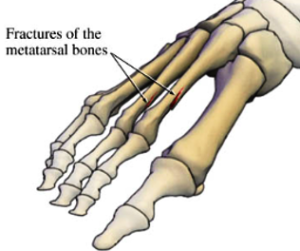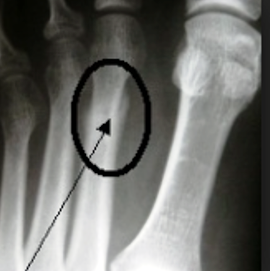Stress Fracture
Stress Fracture
Stress fractures are tiny, hairline breaks that can occur in the bones of the foot. They can be caused by overtraining or overuse, improper training habits, training surfaces, improper shoes, flatfoot or other foot deformities, and even osteoporosis. These tiny breaks in the bones of the feet can lead to a complete break if left untreated.
Causes
Some common causative factors of stress factors are;
- Running on hard, uneven surfaces.
- Inappropriate footwear – poor support or poor cushioning.
- Biomechanical factors – overpronation (flat feet) or supination (high arch feet) resulting in increased force at particular aspects of the foot.
- Osteoporosis – weakening of the bones leading to stress fractures.
- Exercise program – intensity, frequency and duration of training.
Symptoms
Stress fractures commonly occur in the metatarsal bones of the feet, the tibia (shin bone), navicular and femur (thigh bone). Some symptoms of a stress fracture may include pain and swelling, particularly with weight bearing on the injured bone. Some other symptoms associated with stress fractures include;
- Pain, swelling and warmth at the site of injury.
- Redness and bruising at the injured site.
- Pain increased with activity.
- Difficulty putting shoes on.
Treatment
A comprehensive podiatric assessment is recommended to prevent the progression of symptoms and ensure appropriate treatment is undertaken. Diagnostic imaging including a X-ray is used to diagnose a stress fracture. In some cases the fracture may not show up on the X-ray until a couple weeks after the pain starts. Patients are advised to temporarily stop activities that cause the stress fracture during the six to eight weeks it may take for the fracture to heal.
At Sydney Foot Clinic we will attempt to immobilise the bone for a period of six to eight weeks which is usually sufficient. Upon this rehabilitation is performed to ensure you are able to return to normal activities. Some other treatment options available for stress fractures include;
- RICE protocol – rest, ice, compression and elevation will help relieve symptoms
- Adequate footwear – cushioning and supportive helping to redistribute forces throughout the rest of the foot
- Modification of training program – changing intensity, duration, frequency and surface trained on.
- Immbolisation
